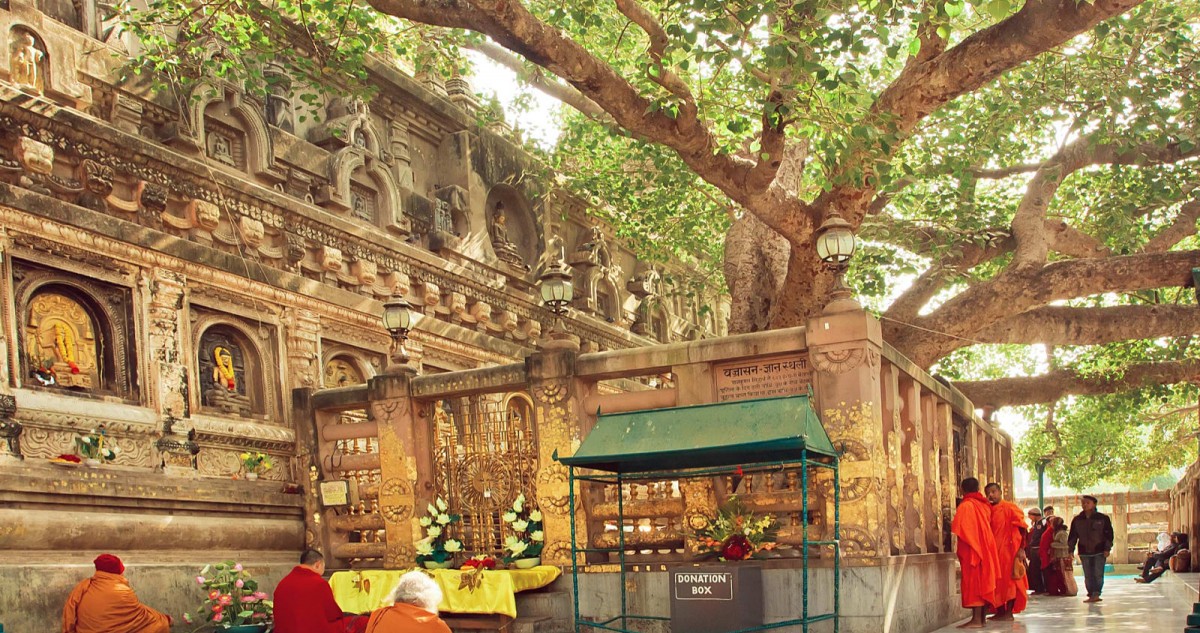For centuries, Buddhist holy sites have drawn pilgrims from across the Indian subcontinent and the Himalayas, as well as from farther afield. Pilgrimage from Tibet's highlands and Nepal down to the plains of India, especially to Bodh Gaya—where the Buddha reached enlightenment—is a transportive spiritual and cultural quest. In this newsletter, such pilgrimages' enduring heritage and the vibrant, living traditions that keep uniting Buddhists across divides are explored.
1. Bodh Gaya's Significance
-
Centre of Enlightenment: Bodh Gaya in Bihar is revered as the site where Gautama Buddha attained enlightenment under the Bodhi Tree. The Mahabodhi Temple, a UNESCO World Heritage Site, is a testimony to this milestone and receives millions of pilgrims annually.
-
Center for Global Pilgrimage: Pilgrims converge at Bodh Gaya from Nepal, India, and Tibet on the occasion of significant festivals like Buddha Purnima (Vesak) to meditate, worship, and conduct rituals.
2. Pilgrimage Paths and Cultural Exchange
-
Ancient Routes: Ancient pilgrimage paths between the Himalayas, India, and Nepal form a spiritual corridor that has spanned cultural exchange for over two millennia.
-
Nepal-India Buddhist Circuit: Nowadays, pilgrimage and tours usually include the major sites such as Lumbini (Nepal, where Buddha was born), Sarnath (India, where the Buddha gave his first teachings), and Bodh Gaya, which allows pilgrims to follow in the Buddha's footsteps.
-
Tibetan Monastic Tradition: Tibetan monks and nuns travel to Indian sites like Bodh Gaya and Sarnath for study, meditation, and participation in grand-scale events like the Nyingma Monlam Chenmo, which encourages the awareness of global Buddhist brotherhood.
3. Living Traditions and Festivals
-
Buddha Purnima (Vesak): The Buddhist festival celebrating the Buddha's birth, enlightenment, and death is celebrated in May each year. In great fervor, it is observed all over India, Nepal, and Tibet, but with added ceremonies at Bodh Gaya and other sacred locations.
-
Community and Ritual: Pilgrimages are not mere visits to holy sites but also shared prayers, Dharma instruction, and rituals reinforcing the shared values of compassion and wisdom.
4. Contemporary Challenges and Resilience
-
Social Problems and Infrastructure: In spite of the religious importance, places of pilgrimage like Bodh Gaya suffer from poverty, lack of infrastructure, and social problems such as child begging and animal welfare issues.
-
Tensions between Cultures: There have been occasional tensions in recent years, including protests by local Buddhists about temple management and the effects of tourism on indigenous communities.
5. Transformation and Unity
-
Personal and Collective Transformation: Pilgrimages offer individuals the opportunity of personal transformation and spiritual rebirth, as well as with a sense of oneness amongst Buddhists from across the globe and across traditions.
-
Global Buddhist Community: The assembly of Indian, Nepalese, and Tibetan Buddhists at sacred sites like Bodh Gaya reaffirms the agelessness of the Buddha's message as well as the community search for enlightenment.
Relevant Sources: CNBC TV18, Outdoor Keeda, Sinibridge, Dakini Translations, Himalayan Mentor

